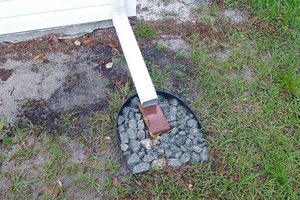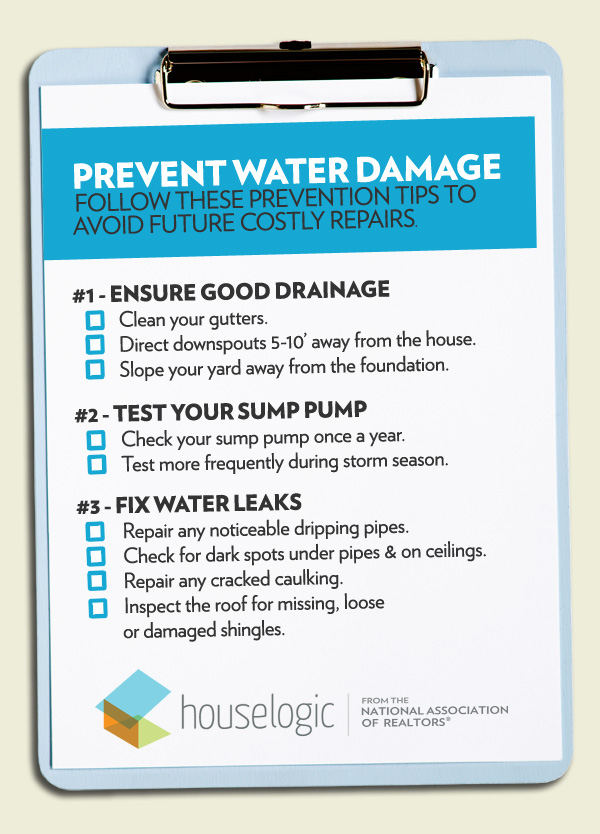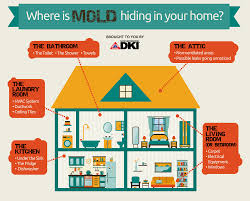Molds produce and release millions of spores small enough to be air-, water-, or insect-borne. They can also produce toxic agents known as mycotoxins. Spores and mycotoxins can have negative effects on human health. For those people who are affected by mold exposures there can be a wide variation in how they react. People at greatest risk of health effects are individuals with allergies, asthma, sinusitis, or other respiratory conditions, as well as infants and children, elderly people, and pregnant women. In addition, individuals with a weakened immune system are at risk.
Water damage is the No. 1 culprit that weakens your home’s foundation and the very core that holds your house together. EMERGENCY WATER DAMAGE RESTORATION SERVICES
 You’ve heard about core strength for your body. Well, water damage hits at the core strength of your house, eventually causing serious structural damage. Damp wood invites termites and carpenter ants; plus, it causes mold and mildew.
You’ve heard about core strength for your body. Well, water damage hits at the core strength of your house, eventually causing serious structural damage. Damp wood invites termites and carpenter ants; plus, it causes mold and mildew.
 You’ve heard about core strength for your body. Well, water damage hits at the core strength of your house, eventually causing serious structural damage. Damp wood invites termites and carpenter ants; plus, it causes mold and mildew.
You’ve heard about core strength for your body. Well, water damage hits at the core strength of your house, eventually causing serious structural damage. Damp wood invites termites and carpenter ants; plus, it causes mold and mildew.
Here are three easy things to do to that will give you piece of mind the next time heavy storms hit.

#1. Ensure Good Drainage
Why it matters: Poor drainage weakens your foundation, causing cracks, uneven settling, and pathways for water to enter your home.
How to do it:
Worst case if you put it off: Your foundation could settle, cracking your basement walls. The cost to stabilize, repair, and seal deteriorated foundation walls is a whopping $15,000 to $40,000.

#1. Ensure Good Drainage
Why it matters: Poor drainage weakens your foundation, causing cracks, uneven settling, and pathways for water to enter your home.
How to do it:
- Clean your gutters routinely. A clogged gutter will send cascades of water down the side of your house, damaging your siding and foundation.
- Ensure your downspouts direct water 5 to 10 feet away from your house.
- Make sure your yard is sloped at least 6 inches over a 10-foot span away from your foundation. That slope keeps water from getting down right next to your foundation, where it could cause walls to lean, crack the masonry, and create leaks. (For crawl spaces, keeping water away makes sure excess water doesn’t pool underneath your floor, making for damp conditions that encourage mold, rot, and insects.)
- But don’t let the soil get too dry, either. Long dry spells let the soil around your house dry out and shrink. A big rain may make the soil expand, putting pressure on your foundation walls. In a drought, run a soaker hose at least 6 inches from the foundation and 3 inches under the soil to keep the soil from contracting and expanding.
Worst case if you put it off: Your foundation could settle, cracking your basement walls. The cost to stabilize, repair, and seal deteriorated foundation walls is a whopping $15,000 to $40,000.
Read more: http://www.restore-911.com
http://www.restore-911.com There are few places on Earth where people need not be concerned about flooding. Any place where rain falls is vulnerable, although rain is not the only impetus for flood.
A flood occurs when water overflows or inundates land that's normally dry. This can happen in a multitude of ways. Most common is when rivers or streams overflow their banks. Excessive rain, a ruptured dam or levee, rapid ice melting in the mountains, or even an unfortunately placed beaver dam can overwhelm a river and send it spreading over the adjacent land, called a floodplain. Coastal flooding occurs when a large storm or tsunami causes the sea to surge inland.Most floods take hours or even days to develop, giving residents ample time to prepare or evacuate. Others generate quickly and with little warning. These flash floods can be extremely dangerous, instantly turning a babbling brook into a thundering wall of water and sweeping everything in its path downstream.
Disaster experts classify floods according to their likelihood of occurring in a given time period. A hundred-year flood, for example, is an extremely large, destructive event that would theoretically be expected to happen only once every century. But this is a theoretical number. In reality, this classification means there is a one-percent chance that such a flood could happen in any given year. Over recent decades, possibly due to global climate change, hundred-year floods have been occurring worldwide with frightening regularity.
Moving water has awesome destructive power. When a river overflows its banks or the sea drives inland, structures poorly equipped to withstand the water's strength are no match. Bridges, houses, trees, and cars can be picked up and carried off. The erosive force of moving water can drag dirt from under a building's foundation, causing it to crack and tumble.
In the United States, where flood mitigation and prediction is advanced, floods do about $6 billion worth of damage and kill about 140 people every year. A 2007 report by the Organization for Economic Cooperation and Development found that coastal flooding alone does some $3 trillion in damage worldwide. In China's Yellow River valley, where some of the world's worst floods have occurred, millions of people have perished in floods during the last century.
When floodwaters recede, affected areas are often blanketed in silt and mud. The water and landscape can be contaminated with hazardous materials, such as sharp debris, pesticides, fuel, and untreated sewage. Potentially dangerous mold blooms can quickly overwhelm water-soaked structures. Residents of flooded areas can be left without power and clean drinking water, leading to outbreaks of deadly waterborne diseases like typhoid, hepatitis A, and cholera.
But flooding, particularly in river floodplains, is as natural as rain and has been occurring for millions of years. Famously fertile floodplains like the Mississippi Valley in the American Midwest, the Nile River valley in Egypt, and the Tigris-Euphrates in the Middle East have supported agriculture for millennia because annual flooding has left millions of tons of nutrient-rich silt deposits behind.
Most flood destruction is attributable to humans' desire to live near picturesque coastlines and in river valleys. Aggravating the problem is a tendency for developers to back fill and build on wetlands that would otherwise act as natural flood buffers.
Many governments mandate that residents of flood-prone areas purchase flood insurance and build flood-resistant structures. Massive efforts to mitigate and redirect inevitable floods have resulted in some of the most ambitious engineering efforts ever seen, including New Orleans's extensive levee system and massive dikes and dams in the Netherlands. And highly advanced computer modeling now lets disaster authorities predict with amazing accuracy where floods will occur and how severe they're likely to be.


ReplyDeleteRead More »..
Fire Damage
Fire Damage
At Dry-Tech Restoration Services, LLC we understand that experiencing fire damage and smoke damage is difficult for anyone. If you are faced ...
Read More »...
Dry-Tech Restoration Services, LLC · 80 Central Avenue · Spring City, PA 19475 · 610-304-5117 · DryTech2014@gmail.com
Service Areas
Fire Damage: Collegeville 19426, Royersford 19468, Norristown 19403, Eagleville 19408, Audubon 19407, Oaks 19456, Schwenksville 19473, Skippack 19474, Phoenixville 19460 Pottstown 19464, Pottstown 19465, Ludwigs 19425, Boyertown 19512, Birdsboro 19508, Kimberton 19442, Douglasville 19518, Zieglersville 19492, Malvern 19355, Chesterbrook 19087, King of Prussia 19406, Wayne 19087, Paoli 19301, Berwyn 19312, Devon 19333, Roxborough 19128, Bryn Mawr 19010, Villanova 19085, Exton 19341, Bala Cynwyd 19004, Merion Station 19066, Narberth 19072, Gladwyne 19035, Valley Forge 19485, Valley Forge 19483, Wynnewood 19096, Lafayette Hill 19444, Worcester 19490, Spring Mount 19477, Lansdale 19446, Harleysville 19438, Blue Bell 19422, Red Hill 18076, Pennsburg 18073, Perkiomenville 18074, Gilbertsville 19525, Barto 19504, Frederick 19435, Conshohocken 19428, Plymouth Meeting 19462, Amity 19518, Kutztown 19530, Bally 19503, Elverson 19520, Honeybrook 19344, Chester Springs 19425, Dresher 19025, Jenkintown 19046, Glenside 19038, City Line 19131, Spring City 19475
Mold Remediation: Collegeville 19426, Royersford 19468, Norristown 19403, Eagleville